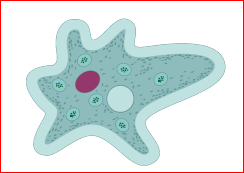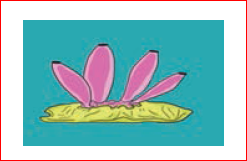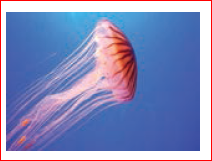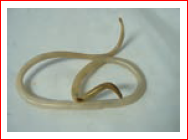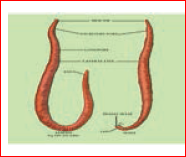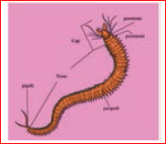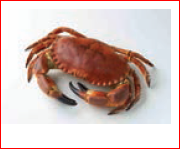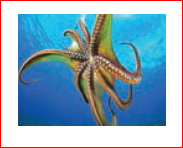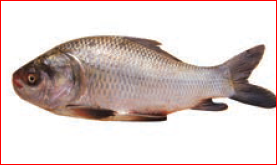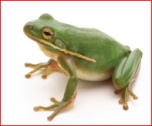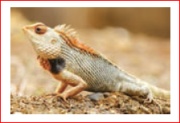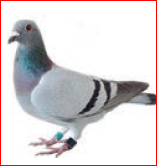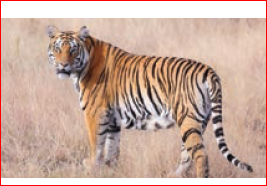Basis Of Classification Notes 7th Science Lesson 11 Notes in English
7th Science Lesson 11 Notes in English
11] Basis Of Classification
Introduction:
Sorting of things is very much required and important for all living beings. We see various plants and animals around us. It is estimated that about 8.7 million species of living organisms have been identified and named till now. However many scientists believe that, only a small portion of the total species existing on earth has been identified. In order to know about the behaviour and relationship among organisms, that are known, biologists have classified them into two broad groups, plants and animals. Grouping of living organisms based on their common features is known as biological classification.
There are some similarities and differences exist among materials. So we need to observe and identify those similarities and differences to construct a dichotomous key. The dichotomous key allows us to make quick reference and identify a particular thing. Classification provides scientists a systematic easy way of studying organisms. Classification is done using this dichotomous key. What is dichotomous key? It is a tool used to classify organisms based on their similarities and differences.
Features of dichotomous key:
- A single feature that differentiate a group easily.
- One character selected to separate the group, as present or absent.
- Continue the 2nd step until only one item will remain at the end.
Dichotomy of Animals:
Using a dichotomy pattern, classify the given list of animals: Ostrich, peacock, monkey, frog, toad, turtle, snake, shark, goldfish, ant, tapeworm, earthworm and leech.
- Presence or absence of back bone, we can classify them into two groups.
- Animals with back bone can be divided into its subgroup based on its body temperature.
- Further classification can be done based on its difference like presence of feather or hair, scales etc.
Basics of Classification:
Living organisms are so large in number that they need to be classified into smaller groups. Classification of living organisms is made on the basis of their characteristics, similarities and differences.
Identify animals with backbone and without backbone based on the figure.

Based on the, special features and characters, the students identify each button, according to its size, hole and colour. This is known as identification. Then teacher shall ask students to separate the buttons according to the size, hole and colours. This is known as assortment.
After assorting the buttons the teacher ask the students to gather the buttons according to their, size, hole and colours. This is termed as grouping. Identification, assortment and grouping, which results in classification
Classification:
The method of arranging the organisms into groups is called classification. When we classify things we put them into groups based on their characteristics.
Why do we classify things?
- Classifying things makes it easy for us to know their similarities and differences.
- Things with similar characters are classified into same group. These things are usually similar in at least one characteristic.
- Things with different characteristics are classified into different groups. These things are usually different in at least one characteristic.
- Classification helps us to understand, living and non – living things in better way. For example, we can classify a newly discovered organism, we would come to know, how it relates with other.
Need for Classification:
- Classification is needed to identify an organism correctly.
- It helps to know the origin and evolution of an organism.
- To establish the relationship among different organisms.
- It provides the information about living things in different geographical regions.
- It helps in understanding how complex organisms must have evolved from simpler ones.
Scientists have been able to discover and classify more than 2 million organisms on the earth ranging from tiny bacteria to the largest blue whales. Each organism has been classified in a category based on its evolutionary relationship with other group of organisms. We can define hierarchy of organisms as:
“The system of arranging taxonomic categories in a descending order based on their relationships with other group of organism is called hierarchy of categories”. This system was introduced by Linnaeus and is called Linnaean hierarchy. There are seven main categories of hierarchies namely, Kingdom, Phylum, Class, Order, Family, Genus and Species. Species is the basic unit of classification.
Based on the above classification the following table shows different phylum, with general features and examples of different phyla and classes
| S.
NO |
General Characters | Division |
| Microscopic unicellular, pseudopodia, flagella and cilia for locomotion, reproduce by fission or conjugation. | Phylum Protozoa Eg. Amoeba, Euglena and Paramoecium
|
|
| Multicellular organisms with holes in the body. Skeleton formed of spicules, asexual and sexual reproduction. | Phylum Porifera
Eg. Leucosolenia, Spongilla, Sycon.
|
|
| Multicellular organisms Diploblastic, sessile or free swimming, solitary or colonial, asexual and sexual reproduction | Phylum Coelenterata
Eg. Hydra, Sea anemone, Jelly fish, Corals.
|
|
| Acoelomates, parasites inside the body of animals and human beings, mostly hermaphrodite (bisexual). | Phylum Platyhelminthes:
Eg. Planaria, Liver fluke , Blood fluke, Tapeworm
|
|
| Unsegmented body, mostly parasites in human beings and animals, causing diseases, asexual reproduction. | Phylum Aschelminthes or Nematoda Eg. Ascaris lumbricoides
|
|
| Triploblastic, segmented body, mostly hermaphrodite (bisexual and unisexual). | Phylum Annelida
Eg. Earthworm, Nereis, Leech.
|
|
| Segmented body, thick chitinous cuticle forming an exoskeleton, paired and jointed legs, unisexual exhibits sexual dimorphism. | Phylum Arthropoda:
Eg. Crab, Prawn, Millipede, Insects, Scorpion, Spider
|
|
| Soft bodied, unsegmented, muscular head, foot and visceral mass, mantle, a calcareous shell, sexual reproduction. | Phylum Mollusca:
Eg. Cuttle fish, Snail, Octopus
|
|
| Exclusively marine, spines and spicules over the body, water vascular system, tube feet, for feeding, respiration and locomotion, sexual reproduction. | Phylum Echinodermata:
Eg. Starfish, Sea – Urchin, Brittle star, Sea cucumber and Sea- lily |
|
| Phylum – CHORDATES | ||
| Aquatic, cold blooded vertebrates with boat shape body and jaws, locomotion by paired and median fins, sexual reproduction. | Class Pisces:
Shark, Catla, Mullet, Tilapia
|
|
| Amphibious, cold- blooded, two pairs of limbs, sexual reproduction. | Class Amphibia:
Eg. Frog, Toad, Salamander, Caecilian
|
|
| Cold- blooded , lung breathing, scales over the body, pentadactyl limb, adapted for climbing, running and padding, oviparous. | Class Reptilia:
Garden lizard, House lizard, Turtles, Tortoise , Snakes, Crocodile
|
|
| Warm blooded, exoskeleton of feathers, flight adaptation, spongy bones with air cavities, powerful eyes, sexual reproduction, oviparous. | Class Aves:
Wader bird, Roller bird, Hoopoe bird, Parrot, Sparrow, Hen, Ostrich, Kiwi.
|
|
| Terrestrial warm blooded, external ear or pinna, muscular diaphragm, non – nucleated RBC, heterodont and diphyodont dentition, viviparous give birth to young ones. | Class Mammalia:
Duck bill Platypus, Kangaroo, Cat, Dog, Tiger, Zeebra, Man
|
|
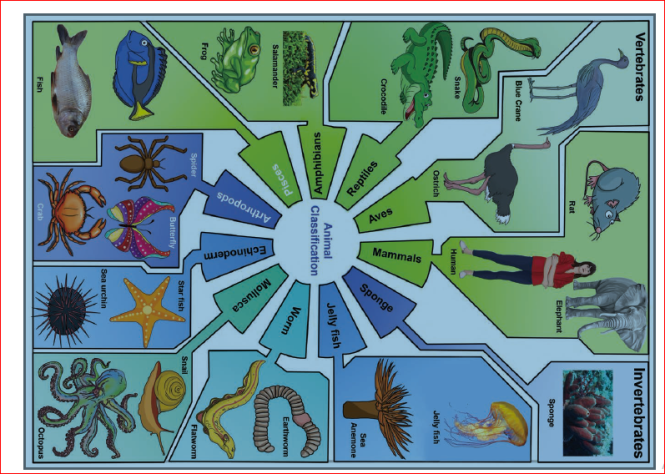
Classification of Plants:
Based on dichotomy, plants also can be classified into two main groups – Flowering and Non – flowering. Non – flowering plants do not produce seeds and flowering plants produce seeds. Based on their nature of plant body, Non – flowering plants are classified into three types: algae, mosses and ferns. Based on their fruit body, flowering plants are classified into two types: gymnosperms and angiosperms.
Algae:
- Plant is thallus, not well-differentiated into root, stem, and leaves.
- They are predominantly aquatic.
- They are unicellular or multicellular – filamentous. Example – Chara.
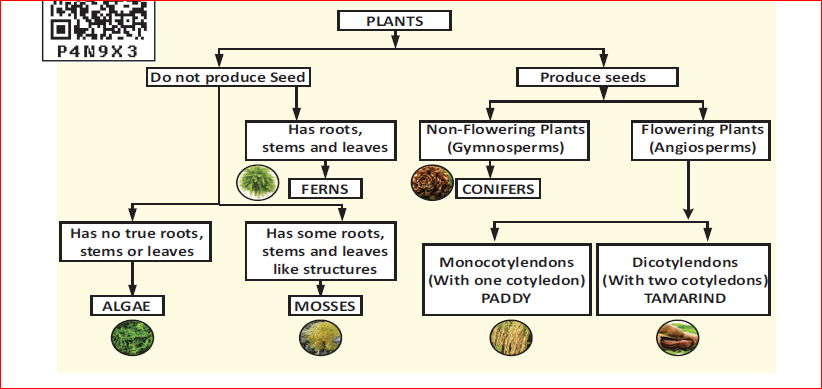
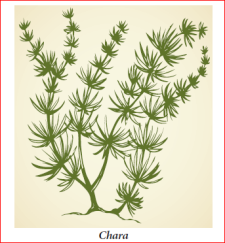
Mosses:
- Plant body is not differentiated into true root, stem and leaves.
- They are water living plants, needs moisture to complete its life cycle. Hence they are referred to as amphibious plants.
- They do not have any specialized vascular tissues for conduction of water and food. Examples: Funaria
Ferns:
- Plant body is well-differentiated into root, stem, and leaves. Leaves may be large or small.
- Specialized vascular tissues are found for the conduction of water and food.
- Basically they are the first land plants which grows well in shady, moist, and cool places. (Examples: Adiantum).
Adiantum
Gymnosperms:
- Plants are perennial, woody, evergreen with true root, stem and leaves.
- They possess vascular tissues, xylem without vessels and phloem without companion cells.
- Ovules are naked, without ovary. Hence they do not produce fruits. Seed are naked. (Examples: Pinus, Cycas)
Pinus
Angiosperms:
- Plant body is well differentiated into true root, stem, and leaves.
- They produce flower with four whorls (calyx, corolla, androecium and gynoecium), hence known as flowering plants.
- Female reproductive organ, ovary is present inside the flower which develops into fruit and ovule develops into seed.
- Plant possess well developed vascular system with xylem vessels and phloem – companion cells.
Angiosperms are the dominant plant forms of present day. Based on the number of cotyledons, angiosperms are broadly divided into two groups. a) monocotyledons b) dicotyledons. Plant seeds which have only one cotyledon are said to be monocots. Plant seeds which have two cotyledons are known as dicots. Example- Paddy (monocot), tamarind (dicot).
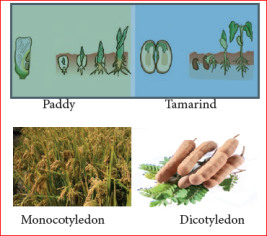
The Five Kingdom Classification:
The five kingdom classification was proposed by R.H. Whittaker in 1969. Five kingdoms were formed on the basis of characteristics such as cell structure, mode of nutrition, source of nutrition and body organization.
Monera Kingdom Monera – Bacteria:
All prokaryotes belong to the Kingdom Monera, which do not posses true nucleus. Cells of prokaryotes do not have a nuclear membrane and any membrane bound organelles. Most of
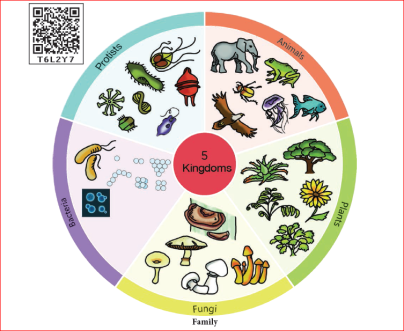
the bacteria are heterotrophic, but some are autotrophs. Bacteria and Blue green algae are examples for monera.
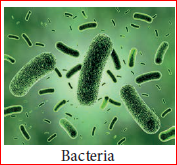
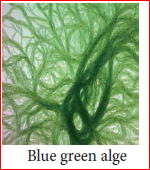
Kingdom Protista:
The Kingdom Protista includes unicellular and a few simple multicellular eukaryotes.
There are two main groups of protists. The plant like protists are photosynthetic and are commonly called algae. Algae include unicellular and multicellular types. Animals like protists are often called protozoans. They include amoeba and paramecium.

Kingdom Fungi:
Fungi are eukaryotic, and mostly are multicellular. They secrete enzymes to digest the food and absorb the food after digested by the enzymes. Fungi saprophytes as decomposers (decay –causing organisms) or as parasites. Kingdom Fungi includes molds, mildews, mushrooms and yeast.
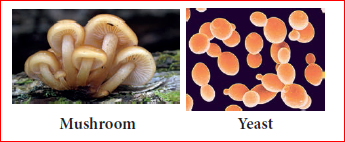
Kingdom Plantae:
Planatae (plants) are multicellular eukaryotes that carry out photosynthesis. Reserve food materials are starch and lipids in the form of oil or fat. Plant cells have cell wall and specialized functions, such as photosynthesis, transport of materials and support. Kingdom Plantae includes ferns, cone bearing plants and flowering plants.
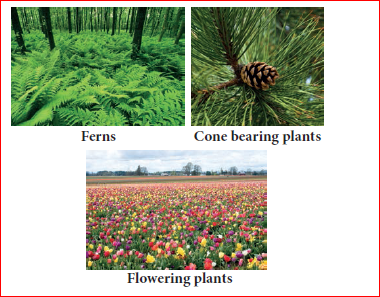
Kingdom Animalia:
Animalia (animals) are multicellular, eukaryotic and heterotrophic animals. Cells have no cell wall. Most members of the animal kingdom can move from place to place. Eg. Invertebrates like sponges, hydra, flatworms round worms, insects, snails, starfishes. Vertebrates like Fish, amphibians, reptiles, birds, and mammals including human beings belong to the kingdom Animalia.
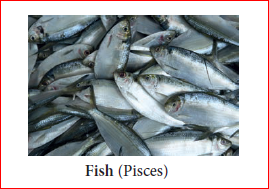
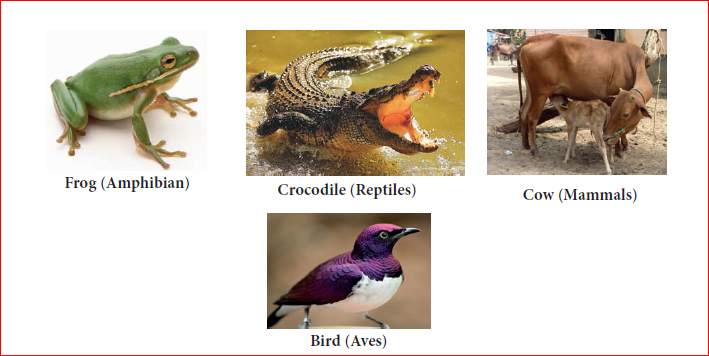
IMPORTANT CHARATERISTICS OF FIVE KINGDOMS
| Characteristics | Monera | Protista | Fungi | Plantae | Animalia |
| Cell type | Unicellular, prokaryotic | Unicellular, Eu-karyotic | Multicellular, non-green and eukaryotic | Multicellular, Eukaryotic | Multicellular, Eukaryotic |
| Nucleus | Absent | Present | Present | Present | Present |
| Body Organisation | Cellular level of organization | Cellular level of organization is | Multi cellular with loose tissue | Tissue level and organ level | Tissue, organ and organ system |
| Mode of Nutrition | Auto (or)Heterotrophic | Auto (or) Heterotropich | Saprophytic, Parasitic Sometime symbiotic | Autotrophic | Heterotrophic |
| Example | Bacteria and blue green algae | Spirogyra and chlamydomonas | Rhizopus and Agaricus | Herb, Shrub and trees. | Fish, frog, crocodile, Birds and human being |
Merits of five Kingdom Classification:
- This system of classification is more scientific and natural.
- This system of classification clearly indicates the cellular organization, mode of nutrition, and characters for early evolution of life.
- It is the most accepted system of modern classification as the different groups of organisms are placed phylogenetically.
- It indicates gradual evolution of complex organisms from simpler one.
Demerits of five Kingdom Classifications::
- In this system of classification of viruses have not been given a proper place.
- Multicellular organisms have originated several times from protists.
- This type of classification has drawn back with reference to the lower forms of life.
- Some organisms included under protista are not eukaryotic.
Binomial Nomenclature:
Gaspard Bauhin in 1623, introduced naming of organisms with two names which is known as Binomial nomenclature, and it was implemented by Carolus Linnaeas in 1753. He is known as ‘Father of Modern Taxonomy’.
Binomial nomenclature is an universal system of naming organisms. As per this system, each organism has two names – the first is the Genus name and the second is the Species name. Genus name begins with a capital letter and Species name begins with a small letter.
Example: The nomenclature for onion is Allium sativam. Genus name is Allium, species name is sativam.
Vernacular name is a local name that is familiar for a particular place. Binomial name is an universal name which never changes. Binomial nomenclature and classification helps scientists to identify any organisms and to place them at a particular hierarchy.
POINTS TO REMEMBER:
- Classification of living organisms is made on the basis of their characteristics, similarities and differences.
- Classification is needful to identify living organisms and to study about them conveniently
- Kingdom is the largest division of the living world and species is the basic unit of classification.
- Kingdom Animalia is divided into 2 sub kingdoms.
- Invertebrates (Animals without back bone)
- Vertebrates (Animals with back bone)
- Invertebrates are classified into nine phyla
- Vertebrates are classified into five classes.
- Plants are classified into flowering and non– flowering plants and further classified into groups based on their nature of plant body and fruiting body.
- In 1969, R.H. Whittakar proposed a five kingdom classification of living organisms.
- The Five kingdom classification includes five kingdom namely – Monera, Protista, Fungi, Plantae and Animalia.
- Gaspard Bauhin is 1623, introduced the binomial nomenclature and it was implemented by Carolus Linnaeus in 1753.
- Binomial nomenclature is an universal system of naming organisms. It contain two names
- The first name of binomial is genus name and the second name is species name
- Carolus Linnaeus is known as Father of Modern Taxonomy
Do You Know?
Aristotle was a Greek philosopher and thinker who lived about 2400 years ago. Aristotle came up with the following grouping system that was used for almost 2000 years after his death!
- He classified all organisms into either animals or plants.
- Then he classified into those ‘with blood’ and those ‘without blood’.
- Then the animals are classified into three groups based on their method of movement: walkers, flyers or swimmers.
Scientific Names of Some Organisms
| S.
No |
Common Name | Scientific Name |
| Human being | Homo sapiens | |
| Onion | Allium sativum | |
| Rat | Rattus rattus | |
| Pigeon | Columba livia | |
| Tamarind | Tamirindus indica | |
| Lime | Citrus aurantifolia | |
| Neem | Tree Azadirachta indica | |
| Frog | Rana hexadactyla | |
| Coconut | Cocos nucifera | |
| Paddy | Oryza sativa | |
| Fish | Catla catla | |
| Orange | Citrus sinensis | |
| Ginger | Zingiber officinale | |
| Papaya | Carica papaya | |
| Date | Phoenix dactylifera |
